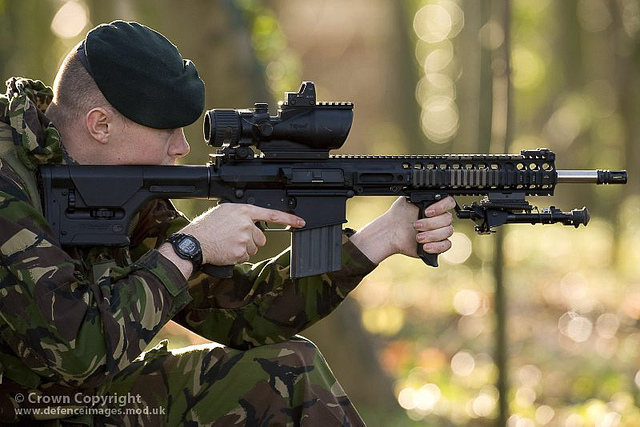The neuroscience of (not) pulling the trigger

Shooting is as much about judging when to refrain from pulling the trigger, as well as knowing when to pull it. A new study from researchers at Duke University looked at what factors increase the likelihood of shooting the “wrong” targets, such as civilians1.
In order to produce a successful voluntary action (as opposed to a reflex one), the brain’s motor system has to coordinate and execute a set of movements. A part of the brain’s job is to also inhibit these movements or swap to a different one if the situation changes. For example, after composing an email, you are about to press “Send”, when you suddenly spot a typo and stop yourself from clicking at the last second. Several studies show that this kind of “emergency break” for an upcoming action is actually quite difficult. However, this sort of action control is crucial for military or police personnel in order to minimize civilian casualties, if an unarmed person suddenly runs across the line of fire.
The Duke University study suggests that this struggle to inhibit an action is more to do with poor attention – an “itchy brain”, rather than motor impulsivity – an “itchy trigger finger”. Participants in the study played a simulated shooting game, and filled out questionnaires which measured attention deficit/hyperactivity disorder (ADHD) symptoms, autism and various forms of impulsivity. The aim of the game was to hit as many targets as possible whilst avoiding shooting unarmed civilians – shooting civilians would mean failing to inhibit an initiated motor response. The likelihood of shooting civilians in the video game correlated with attention problems such as ADHD, but not with motor impulsivity.
The researchers then predicted that “brain training” for so called response inhibition may minimize the number of civilians hit in the game. In later sessions participants received three days of cognitive training. One group underwent training on response inhibition – practising inhibition of an action that is about to be initiated. The second group completed cognitive training unrelated to the shooting task, to see whether any kind of brain training is enough to improve performance in the game.
On the final day, both groups played the shooting game again. The researchers found that the group which completed the response inhibition training shot fewer civilians than the control group. This means that learning to stop an action at the last minute can help reduce civilian casualties. Moreover, this effect was not due to simply fewer shots being fired. In actual fact, participants hit more of the right targets and fewer of the wrong ones after the training session. Another interesting finding from the study is that the more ADHD symptoms a person reported, the more likely they were to improve with the response inhibition training.
It seems that accurate shooting is more than just good aim and physical ability. However, it remains to be seen how long-lasting the improvements from cognitive training are, and whether they would be observed in a more natural military setting.
Edited by Debbie Nicol
References
- Biggs, Cain & Mitroff (2015). Cognitive Training Can Reduce Civilian Casualties in a Simulated Shooting Environment. Read more here.










